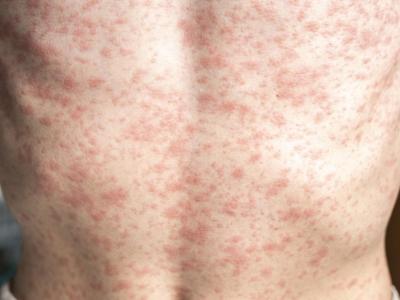Feb 1, 2011
Experts detail Egypt's H5N1 challenges
The endemic status of the H5N1 avian influenza virus in Egypt is overwhelming the country's control efforts, and more global cooperation is needed to prevent more damage to Egypt's poultry industry and reduce the threat of a flu pandemic, two veterinarians with close knowledge of the country's disease situation reported today. They published their review in Epidemiology and Infection. Since the virus first emerged in Egypt in 2006, poultry outbreaks and human infections have become year-round occurrences, even in summer months. The article says several factors could be impacting the epidemiology of the disease, such as free access of dogs and wild birds to carcasses of culled H5N1-infected poultry. Human infections are becoming more common in children, but experts aren't sure why. Two main factors that could drive genetic changes in H5N1 viruses circulating in Egypt are (1) incomplete poultry vaccination strategies that don't include regular surveillance and (2) continuous and inter-species circulation of the virus. Oseltamivir-resistance changes seen in a 2007 family illness cluster and an amantadine-resistant marker isolated from chicken isolates remain rare, the authors noted. The government is working to phase out live poultry markets and is considering ending routine poultry vaccinations, but it is having a difficult time enforcing biosecurity standards, especially at unregistered small and medium-size commercial farms.
Feb 1 Epidemiol Infect abstract
Study: 2009-10 seasonal vaccine triggered antibodies to pandemic virus
Scientists with the US Food and Drug Administration report evidence that the 2009-10 seasonal flu vaccine in US adults generated a "moderate boost" in antibodies to the 2009 pandemic H1N1 vaccine. Writing in PLoS One, the authors say they used a hemagglutination inhibition assay (HAI) to assess antibodies in adults before and after they received the 2009-10 seasonal flu shot. Their sample included 120 volunteers aged 20 through 64 years and 59 volunteers who were 65 or older. All the volunteers showed a "robust" increase in antibodies to the A/H1N1 and A/H3N2 flu strains in the vaccine, with 70% showing a titer of 40 or higher. However, the response to the type B strain in the vaccine was much lower, as less than 30% of the volunteers showed an HAI titer of at least 40. In testing the volunteers' samples against H1N1 pandemic viruses, the scientists found that after vaccination, 24% of the younger adults and 36% of the elderly ones showed a titer of 40 or higher against the pandemic strain A/South Carolina/18/2009, versus 4% and 7%, respectively, at baseline. Also, 22% of the younger group and 34% of the elderly showed a fourfold increase in antibodies to that pandemic strain after receiving the seasonal shot. The authors comment that their study and others suggest that annual seasonal flu vaccination may provide some level of protection against novel flu viruses.
Jan 31 PLoS One report
Study: Same-sex flu spread likely predominates in schools
Boys tend to pass influenza to other boys and girls to other girls, according to a mathematical modeling study that also found that the late closing of a school during the 2009 H1N1 pandemic likely did little to reduce transmission. Researchers from the Imperial College in London, the US Centers for Disease Control and Prevention, and the Pennsylvania Department of Health studied extensive data from seating charts, school schedules, bus schedules, nurse logs, attendance records, and questionnaires for 370 students (81% of the school) in a Pennsylvania elementary school that closed early in the 2009 H1N1 pandemic as the disease spread in the surrounding rural community. Using complicated epidemiologic modeling, the scientists found that children were about three times more likely to transmit flu to children of the same sex than to children of the opposite sex. They also found a fivefold higher transmission rate between classmates than between children in a different class in the same grade, as well as a 25-times higher rate between classmates than between children in different grades. But they also found that sitting next to a student who has the flu does not significantly raise a child's risk of catching it. The school closed 18 days into the outbreak, when 27% of pupils had already had symptoms, which was likely too late in the epidemic to slow flu transmission, the researchers wrote.
Jan 31 Proc Natl Acad Sci abstract
Jan 31 Imperial College press release
FluMist gains EU approval
The European Commission (EC) has approved AstraZeneca's inhaled, live attenuated flu vaccine Fluenz, which goes by the name FluMist in the United States, the company announced today. The move clears the vaccine for use in children aged 2 to 18. The EC regulates drugs for 27 European member states and three European Union economic area countries. In October 2010 an advisory committee to the EC, the Committee for Medicinal Products for Human Use, recommended approval for the inhaled flu vaccine. AstraZeneca said it expects the vaccine to be available in select markets for the 2012-13 flu season.
Feb 1 AstraZeneca press release
Mobile disease-detecting unit moves a step closer to reality
Scientists are testing a critical component of the High-Throughput Laboratory Network (HTLN), which will move the compact, self-contained automated screening system one step closer to use in detecting pandemic strains of influenza and other deadly infectious diseases. Researchers from the Los Alamos National Laboratory (LANL) and the University of California Los Angeles School of Public Health announced their plan in a press release yesterday to test and certify an extraction and screening system under development by HighRes Biosolutions of Boston. This component is designed to allow cross-referencing of genetic material from samples collected from infected people or the environment with reference samples. When completed, the HTLN will enable sequencing of as many as 10,000 full virus genomes per year, more than the total of all full influenza genomes sequenced to date. The press release says that a suite of HTLNs could form a global network that could provide disease surveillance to regions that otherwise would not have it. "The HTLN project provides an opportunity to deploy high-throughput technology in a way that can protect the health of so many people," said Tracy Erkkila, LANL project manager.
Jan 31 LANL press release


















